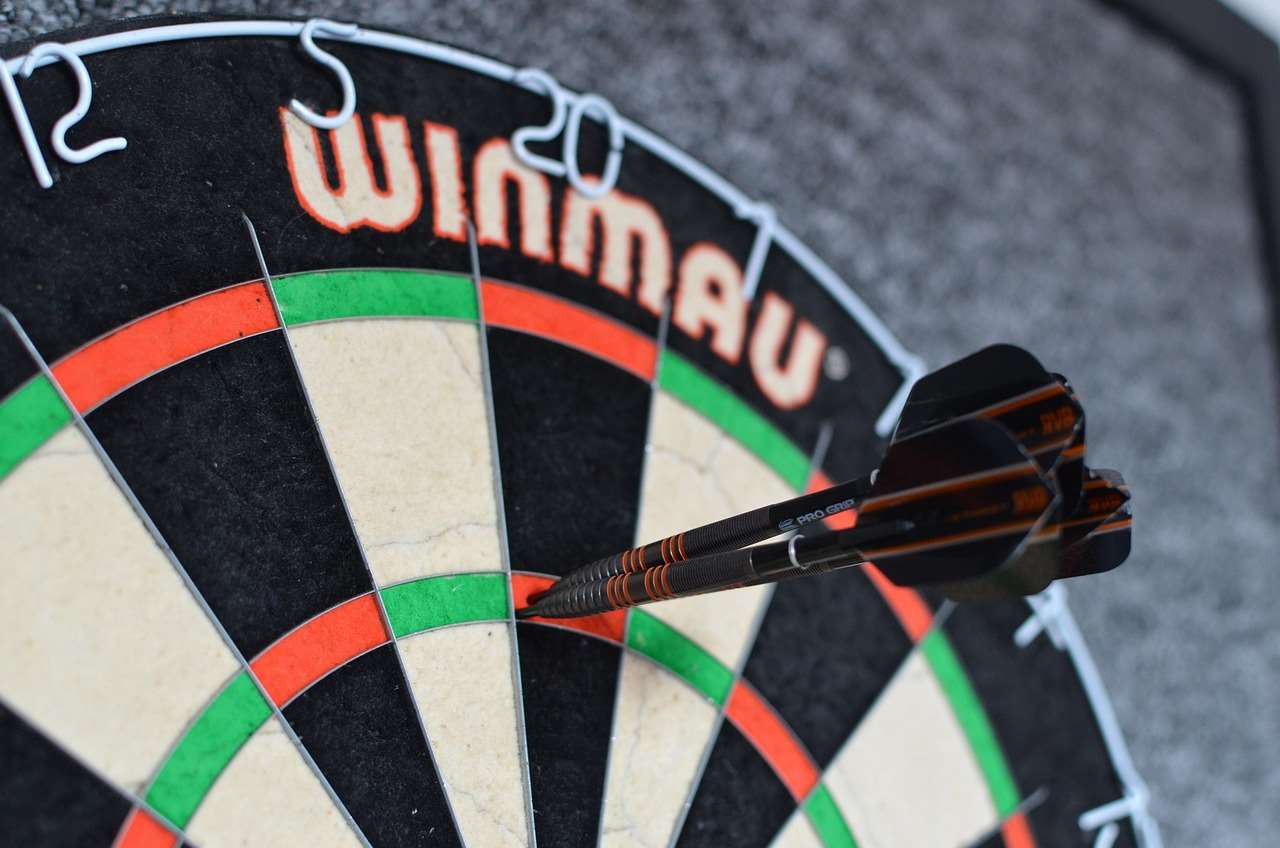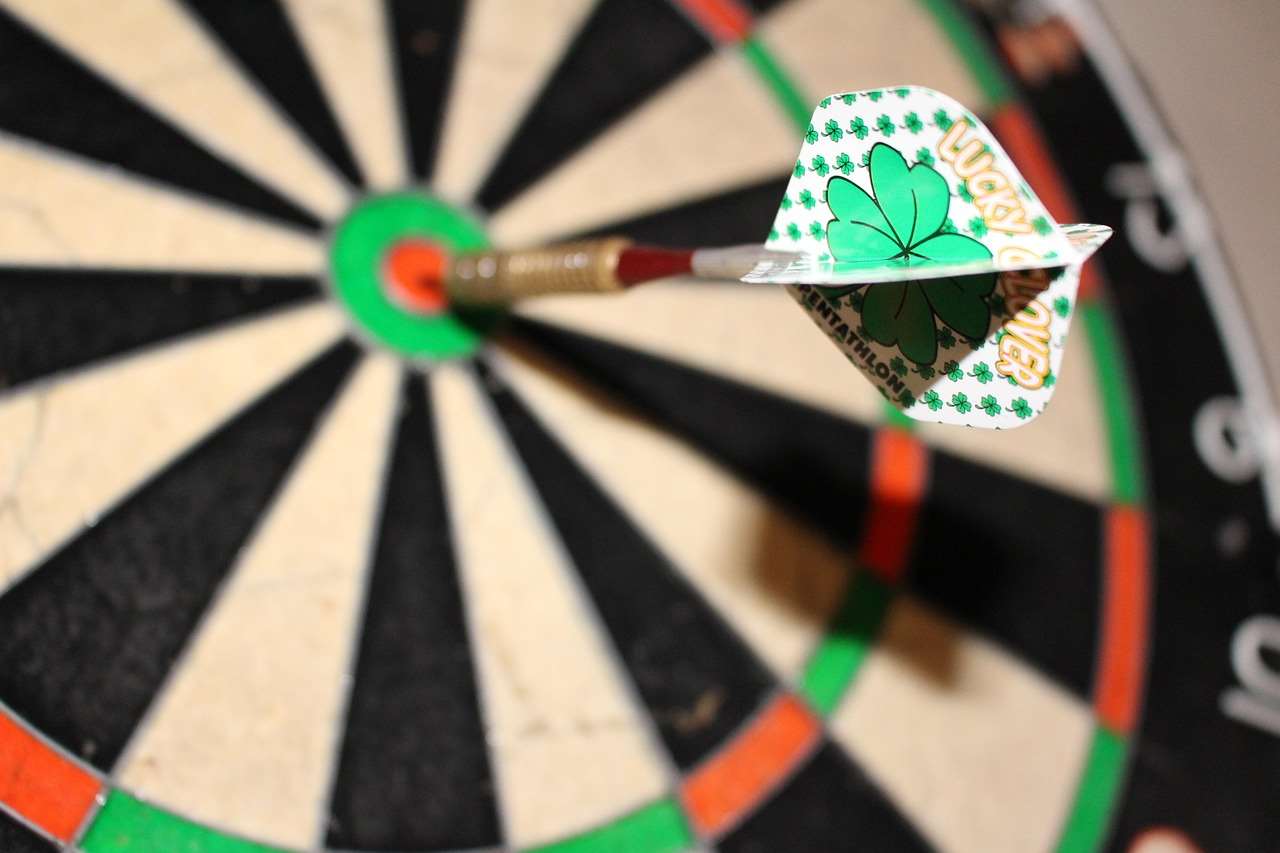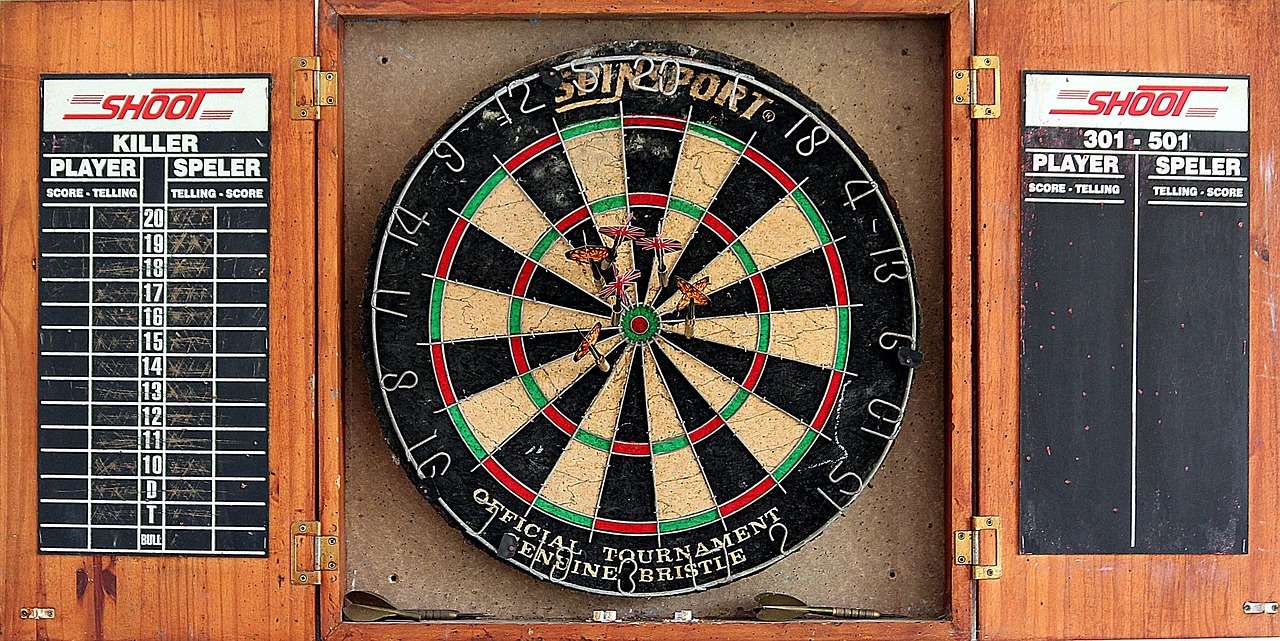The **darts broadcast market competition** is heating up, offering fans more viewing options and driving innovation in coverage. This article explores the key players, emerging trends, and financial implications of the competitive landscape, shedding light on how these factors are shaping the future of darts broadcasting.
⚠️ Still Using Pen & Paper (or a Chalkboard)?! ⚠️
Step into the future! The Dart Counter App handles all the scoring, suggests checkouts, and tracks your stats automatically. It's easier than you think!
Try the Smart Dart Counter App FREE!Ready for an upgrade? Click above!
Understanding the Key Players in Darts Broadcast Market Competition
The world of darts broadcasting is no longer dominated by a single entity. While Sky Sports remains a significant force, a variety of broadcasters and streaming services are vying for a piece of the action. Understanding the major players and their strategies is crucial to grasping the dynamics of darts broadcast market competition.
- Sky Sports: A long-standing partner of the Professional Darts Corporation (PDC), Sky Sports holds significant rights, including major tournaments like the World Darts Championship and the Premier League Darts. Their comprehensive coverage and experienced commentary team have established them as a premier destination for darts fans.
- ITV: ITV has steadily increased its darts coverage, securing rights to events like the Players Championship Finals and the Masters. Their free-to-air platform provides wider accessibility to the sport, attracting a broader audience. You can also delve deeper into the ITV darts broadcast deal to learn more about their strategy.
- DAZN: The global streaming platform DAZN has been expanding its darts portfolio, acquiring rights in various territories. Their focus on digital distribution caters to a younger, more tech-savvy audience. Understanding the ins and outs of the DAZN darts streaming deal reveals how they’re changing the game.
- Viaplay: Viaplay has made a significant push into the European darts market, securing rights in several countries. Their multi-territory approach allows them to offer consistent coverage to a wide range of fans. Explore the Viaplay darts rights europe strategy for a deeper understanding.
- Other Broadcasters & Streaming Services: Several smaller broadcasters and streaming services are also involved, often focusing on specific regions or tournaments. These platforms contribute to the overall diversity of the darts broadcast market competition.

The Impact of Competition on Viewership and Coverage
The increased competition in the darts broadcast market benefits viewers in several ways. Firstly, it provides more choice. Fans are no longer limited to a single broadcaster and can choose the platform that best suits their needs and preferences. Secondly, competition drives innovation. Broadcasters are constantly seeking new ways to enhance their coverage, whether through advanced graphics, immersive commentary, or interactive features. This has also impacted the darts tv rights value.
Moreover, competition can lead to greater accessibility. Free-to-air broadcasters like ITV make the sport available to a wider audience, while streaming services offer flexible viewing options on various devices. This increased accessibility helps to grow the sport’s fanbase and attract new viewers.
Emerging Trends Shaping the Darts Broadcast Market Competition
Several key trends are influencing the darts broadcast market competition. These trends are not only shaping how darts is consumed but also determining the strategies of broadcasters and streaming services.
- The Rise of Streaming: Streaming services are rapidly gaining ground, offering on-demand access and mobile viewing options. This trend is particularly appealing to younger audiences who prefer to consume content on their own terms. Understanding darts streaming rights cost and how they are negotiated is crucial.
- Digital Engagement: Broadcasters are increasingly focusing on digital engagement, utilizing social media, interactive features, and online content to connect with fans and enhance the viewing experience.
- Data Analytics: Data analytics is playing a growing role in darts broadcasting, providing insights into viewer behavior, audience demographics, and the effectiveness of different programming strategies.
- Globalization: Darts is becoming increasingly popular worldwide, leading broadcasters to expand their coverage to new territories and cater to diverse audiences. The business of darts is truly becoming global.
These trends are creating new opportunities and challenges for broadcasters, forcing them to adapt and innovate to remain competitive in the ever-evolving darts broadcast market.

Financial Implications of Darts Broadcast Market Competition
The intense darts broadcast market competition has significant financial implications for all stakeholders, including broadcasters, the PDC, and the players themselves. Increased competition can drive up the value of broadcasting rights, benefiting the PDC and its members. However, it also increases the pressure on broadcasters to generate revenue and justify their investment.
Broadcasting Rights Fees and Revenue Generation
The value of darts broadcasting rights has increased significantly in recent years, reflecting the sport’s growing popularity and the heightened competition among broadcasters. This has led to lucrative deals for the PDC, enabling them to invest in the sport’s development and prize money. The PDC Sky Sports deal worth discussion is testament to that.
Broadcasters generate revenue through a combination of advertising sales, subscription fees, and pay-per-view events. The profitability of darts broadcasting depends on factors such as viewership numbers, advertising rates, and the ability to attract and retain subscribers.

Impact on Players and the PDC
The increased revenue generated from broadcasting rights has a direct impact on the players, as it allows the PDC to offer higher prize money and improve the overall financial incentives for professional darts players. This attracts more talent to the sport and enhances the level of competition. The PDC also needs to consider how darts media deals work in the long term.
The PDC also benefits from the increased exposure generated by widespread broadcasting, which helps to grow the sport’s fanbase and attract new sponsors. This creates a virtuous cycle of growth and investment.
Strategies for Success in a Competitive Darts Broadcast Market
To succeed in the competitive darts broadcast market, broadcasters and streaming services need to adopt effective strategies that differentiate them from their rivals and appeal to viewers. Here are some key strategies:
- Securing Exclusive Rights: Obtaining exclusive rights to major tournaments is a crucial way to attract viewers and establish a competitive advantage.
- Investing in High-Quality Production: Delivering high-quality production values, including state-of-the-art cameras, graphics, and commentary, is essential for creating an engaging viewing experience.
- Developing Innovative Content: Broadcasters need to develop innovative content formats, such as behind-the-scenes features, player interviews, and interactive segments, to keep viewers entertained.
- Leveraging Digital Platforms: Utilizing digital platforms, such as social media, websites, and mobile apps, is essential for reaching a wider audience and engaging with fans.

Understanding Rights Negotiation in Darts
Negotiating broadcasting rights is a complex process that requires a deep understanding of the market dynamics, the value of different tournaments, and the needs of both the PDC and the broadcasters. Strong negotiation skills are essential for securing favorable deals that benefit all parties involved. You can learn more about negotiation darts tv rights by further research.
Broadcasters need to carefully assess the potential return on investment of different broadcasting rights packages and develop a strategy that aligns with their overall business objectives. The PDC, on the other hand, needs to maximize the value of its broadcasting rights while ensuring that the sport is accessible to a wide audience.

The Future of Darts Broadcast Market Competition
The darts broadcast market competition is likely to intensify further in the coming years, driven by the continued growth of the sport’s popularity and the increasing availability of digital platforms. This will create new opportunities for broadcasters and streaming services to reach a wider audience and generate revenue.
Technological Advancements and the Viewing Experience
Technological advancements, such as 4K resolution, virtual reality, and augmented reality, are likely to transform the darts viewing experience in the future. These technologies will provide viewers with a more immersive and engaging experience, blurring the lines between watching the sport and being there in person. Understanding darts broadcasting rights explained helps anticipate future changes.
The Ongoing Evolution
As the darts broadcast market competition evolves, broadcasters and streaming services will need to continue to adapt and innovate to stay ahead of the curve. Those who can successfully leverage new technologies, develop compelling content, and engage with fans in meaningful ways will be best positioned to thrive in this dynamic and exciting market.
The ongoing battle between traditional broadcasters and newer streaming services will likely continue to shape the landscape, offering fans more choice and driving innovation in coverage.
Conclusion
The **darts broadcast market competition** is a dynamic and evolving landscape that presents both opportunities and challenges for broadcasters, the PDC, and the players. Increased competition is driving innovation, enhancing the viewing experience, and generating significant revenue for the sport. To succeed in this competitive market, broadcasters need to secure exclusive rights, invest in high-quality production, develop innovative content, and leverage digital platforms. As technology continues to advance and the sport’s popularity grows, the future of darts broadcasting promises to be even more exciting. Stay tuned for further developments and consider exploring the world of the Business of Darts to further enrich your understanding!
Hi, I’m Dieter, and I created Dartcounter (Dartcounterapp.com). My motivation wasn’t being a darts expert – quite the opposite! When I first started playing, I loved the game but found keeping accurate scores and tracking stats difficult and distracting.
I figured I couldn’t be the only one struggling with this. So, I decided to build a solution: an easy-to-use application that everyone, no matter their experience level, could use to manage scoring effortlessly.
My goal for Dartcounter was simple: let the app handle the numbers – the scoring, the averages, the stats, even checkout suggestions – so players could focus purely on their throw and enjoying the game. It began as a way to solve my own beginner’s problem, and I’m thrilled it has grown into a helpful tool for the wider darts community.